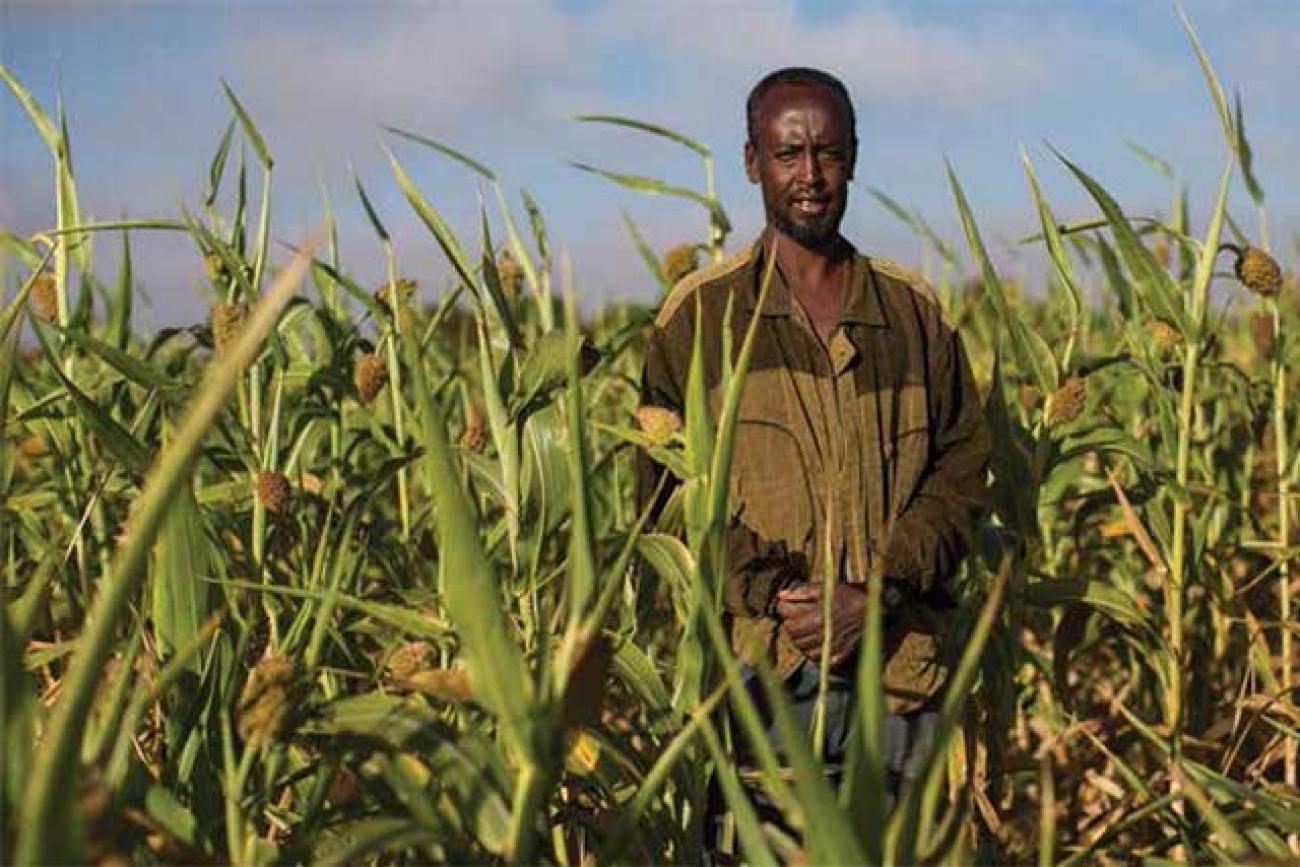Almost 230,000 people facing emergency and crisis levels of food insecurity in the first half of 2017 were able to secure a good harvest despite ongoing drought
Almost 230 000 people who were facing emergency and crisis levels of food insecurity in the first half of 2017 were able to secure a good harvest despite ongoing drought. FAO provided quality local seeds, land preparation or irrigation support, training, safe storage equipment and cash to families in Somalia’s southern breadbasket, and in Somaliland.
Despite poor Gu season (March to May) rains on average these maize- and sorghum-growing families yielded 43 percent more than families who did not receive support (e.g. enough sorghum to feed each family for two years). They had better access to food, dietary diversity and larger livestock holdings than other families.
The cash+ package meant families could buy food to meet immediate needs while growing food over the longer term. Families received monthly unconditional cash transfers for three months – the time it takes to plant and harvest a staple crop. The support coincided with the lean season, when food stocks become increasingly scarce until new crops are harvested.
By the end of the three-month programme, farmers harvested maize and sorghum (staple crops), cowpea (a source of protein) and vegetables (sources of vitamins and minerals). A massive humanitarian response in rural areas held back famine in 2017. However, 6.2 million Somalis remain food insecure.
Link to original story





